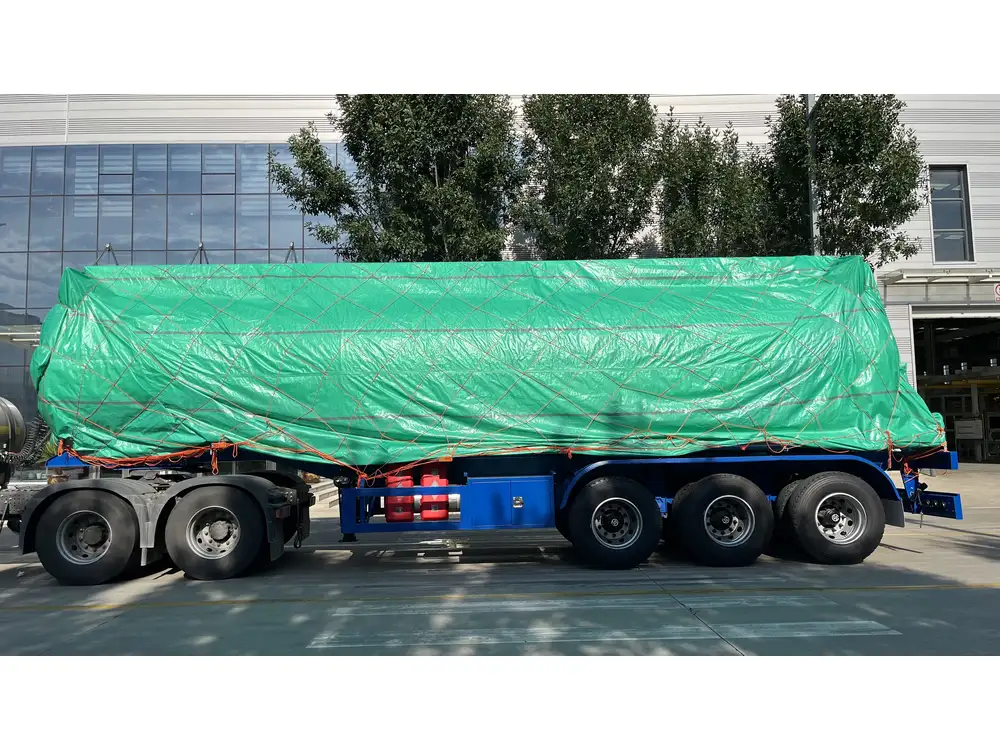Flatbed trailers are valuable assets in various industries, providing unparalleled utility in transporting goods. However, over time, the wood deck of your flatbed can suffer from wear and tear due to external elements, heavy loads, or even improper maintenance. This article serves as a comprehensive guide on how to replace the wood deck on your flatbed trailer efficiently, ensuring minimal downtime and maximizing functionality.
Understanding the Importance of a Quality Deck
Structural Integrity
The wood deck of a flatbed trailer supports heavy loads and contributes significantly to the overall structural integrity. An aging or damaged deck can lead to severe problems such as load shifting, instability during transport, and increased wear on the trailer’s chassis. Regular inspection and timely replacement are vital in preventing these issues.

Safety Considerations
Safety is paramount when dealing with heavy equipment. A compromised wood deck can pose significant risks not only to the load being transported but also to the driver and others on the road. Ensuring the deck is secure and in good condition is essential for safeguarding everyone involved.
Signs That Your Deck Needs Replacement
Before delving into the replacement process, let’s explore the key indicators that suggest it is time for a new deck:
| Indicator | Description |
|---|---|
| Excessive Cracking | Visible splits and cracks in the wood that compromise strength. |
| Warping or Bending | Deformed sections due to moisture absorption or heavy loads. |
| Rotting or Decay | Soft spots or discoloration indicate significant damage. |
| Splintering | Broken surface areas that can lead to hazardous conditions. |
| Rusted Fasteners | Corrosion of bolts and screws affecting stability and security. |
Recognizing these signs aids in deciding whether to refurbish or completely replace the deck.
Materials Utilized for Wood Decking
When replacing your flatbed trailer’s wood deck, the choice of material is crucial. Common materials include:
| Material | Pros | Cons |
|---|---|---|
| Pressure-Treated Lumber | Resistant to moisture and insects, durable | Heavier and may warp under extreme conditions |
| Composite Decking | Moisture-resistant, lightweight, long-lasting | Higher initial cost and limited load capacity |
| Marine-Grade Plywood | Excellent resistance to rot and decay | More expensive and may require special handling |
Selecting the right material based on your specific needs is essential for promoting longevity and functionality.

Tools and Supplies Required
Preparation is key to a successful deck replacement. Below is a list of tools and supplies you will need:
Essential Tools
- Saw (Circular or reciprocating for precise cuts)
- Drill (For fastening new boards)
- Screwdriver Set (For handling various types of fasteners)
- Measuring Tape (For accurate dimensions)
- Level (To ensure a flat surface)
- Safety Gear (Gloves, goggles, ear protection)
Required Supplies
- New Decking Material (Chosen per your requirements)
- Wood Sealant (To preserve and protect wood)
- Fasteners (Screws, bolts, and brackets tailored for decking)
- Wood Treatment Products (Optional but recommended for longevity)

Step-by-Step Guide to Replacing Your Flatbed Trailer Deck
Step 1: Preparation and Safety
- Inspect the Existing Deck: Assess the current state and make a note of the areas requiring attention.
- Safety Precautions: Wear protective gear, including gloves and goggles, before starting the replacement process.
- Clear the Trailer: Remove all cargo and items on the trailer to ensure ample working space.
Step 2: Remove the Old Decking
- Unscrew the Old Boards: Using your drill or screwdriver, carefully remove all fasteners securing the old decking.
- Lift the Boards Off: If the boards are particularly stubborn, a pry bar may assist in lifting them off.
- Inspect the Substructure: Once the old deck is off, check the underlying frame for damage, rust, or compromised areas that might need repair.

Step 3: Prepare the New Decking
- Measure and Cut the New Boards: Using your measuring tape and saw, cut the new decking material to fit snugly on the trailer frame.
- Treat the Wood: If using natural wood, consider applying a wood sealant or treatment to enhance durability against moisture and rot.
Step 4: Install the New Decking
- Lay the Boards: Position the new boards on the trailer frame. Begin from one end and work your way to the other, ensuring even spacing between individual boards.
- Fasten the Boards Securely: Use your drill to attach the new boards. Ensure that the fasteners penetrate deep enough to hold securely without compromising the board’s integrity.
- Check for Level: After securing all boards, use the level to ensure the decking is flat and even, making necessary adjustments as required.
Step 5: Final Touches
- Inspect for Loose Fasteners: Go through each fastener to ensure everything is tight and secure.
- Apply a Final Treatment: Consider applying a wood preservative or sealant to the entire deck surface to maximize durability.
- Recheck for Safety: Conduct a final inspection to assure that all features (lights, reflectors) are intact and functional.

Routine Maintenance to Prolong Your Deck’s Lifespan
Regular Inspections
Conduct frequent checks for any signs of wear, moisture accumulation, or damage. Address issues immediately to avoid compound problems down the line.
Cleaning
Keep the deck clean and free of debris. Contaminants can cause rotting and damage over time. Use a pressure washer or hose to remove dirt and grime periodically.

Treatment
Applying wood treatments every year can help protect against rot, rust, and insect damage. Prioritize moisture-resistant treatments, especially in wet climates.
Common Questions and Considerations
How Long Does a Wood Deck Last?
- The longevity of a wood deck can range from 5 to 15 years based on the material used and maintenance practices.
Can I Replace the Wood Deck Myself?
- Yes, with the right tools and proper knowledge, DIY replacement is feasible. Ensure you follow safety guidelines and manufacturer recommendations.
What is the Cost of Replacing a Wood Deck?
- Costs can vary significantly depending on materials, labor, and trailer size. Generally, prices range from $600 to $2,500.
Can I Use a Different Material for Replacement?
- Absolutely! Many opt for composite materials or aluminum for increased durability and lower maintenance requirements.
What is the Best Time of Year to Replace My Deck?
- Spring or early fall are ideal; temperatures are moderate, reducing the risk of wood expansion or contractions.
Conclusion
Replacing the wood deck on your flatbed trailer is an essential task that demands attention to detail and commitment to safety. By following the outlined steps and utilizing the right materials and tools, you can ensure your trailer maintains optimal performance and structural integrity. Regular maintenance will further extend the life of the deck, providing you with a dependable platform for years to come.
Investing time and resources into this process not only safeguards your assets but also enhances productivity and safety in your operations. With the right knowledge, skills, and tools, embarking on this project will be a worthwhile endeavor that greatly benefits your flatbed trailer’s utility.



